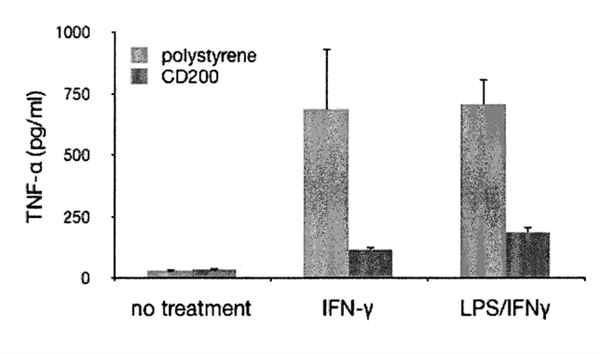Immunomodulary Materials for Implantable Medical Devices
Brief Description
The host response to biomaterials is a huge challenge for the design of medical devices. Researchers at UC Irvine have created an extremely biocompatible material that can escape inflammatory immune attack.
Full Description
Traditional methods to reduce the foreign body response to biomaterials have focused on developing nonadhesive materials that prevent protein and cell binding. While this approach has had some success for materials administered into a fluid environment such as the bloodstream (for example, PEGylated drug delivery carriers), it has not been effective for materials implanted in a more static environment such as the tissue space. Alternative approaches to immune inhibition may utilize pharmacological agents, as has been introduced in the form of drug-eluting stents. However, this approach can inhibit healing and also induce cytotoxic effects in local tissue.
Researchers at UC Irvine have instead developed a biocompatible material that is able to prevent inflammatory process and limit the formation of scar tissue. Upon coating materials with an immunomodulatory molecule Cluster of Differentiation 200 (CD200) protein, the inventors were able to reduce adhesion and inflammatory activation of adhered immune cells.
CD200 is a surface glycoprotein that delivers inhibitory signals to immune cells including neutrophils and macrophages. It is expressed in many tissues such as the endothelium, neurons, and thymocytes. This invention leverages the immunomodulatory properties of CD200 to create a biomaterial that will reduce inflammatory cell activation. The CD200 can be tethered to a wide variety of surfaces through bioconjugation strategies.

Suggested uses
This technology can be used to reduce the inflammation response of the body to a material, thus having applications in implanted medical devices, sutures, biosensors, device leads, cell encapsulation devices, and tissue engineering.
Advantages
Instead of trying to prevent protein adhesion, this technology uses the endogenous protein expressed on host cells. CD200 is natural expressed on cells to inhibit inflammatory activation, and also is upregulated in macrophages polarized towards a pro-healing phenotype. Application of this invention can not only prevent the inflammatory response, but also promote healing and regeneration of healthy issue.
Furthermore, instead of using the entire CD200 protein, the active region of the molecule can be used with the same effects. Synthesis of this molecule and conjugation of this peptide to various types of surfaces can be done.
Patent Status
| Country | Type | Number | Dated | Case |
| United States Of America | Issued Patent | 9,717,827 | 08/01/2017 | 2013-015 |
Contact
- Patricia H. Chan
- patricia.chan@uci.edu
- tel: View Phone Number.
